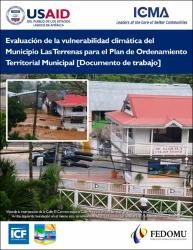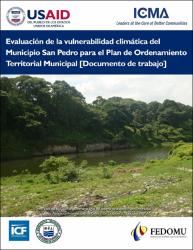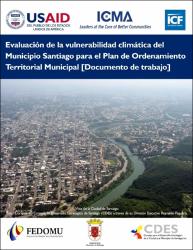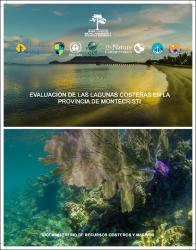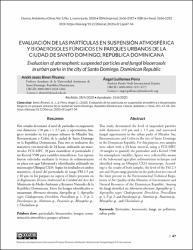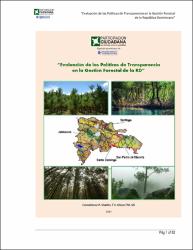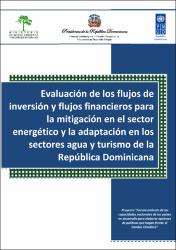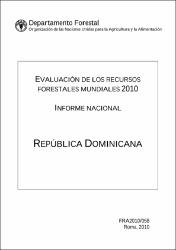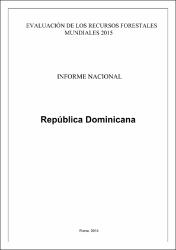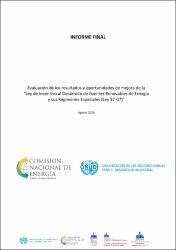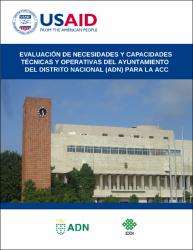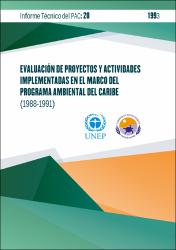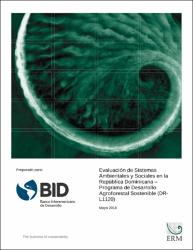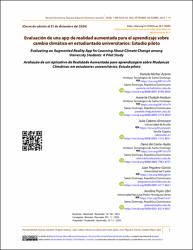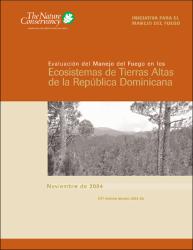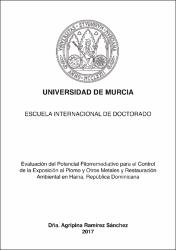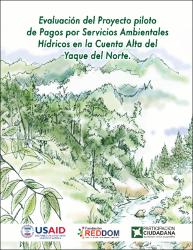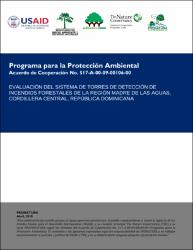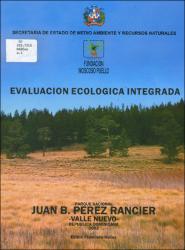Browsing by Title
Now showing items 2462-2481 of 6375
-
Evaluación de la vulnerabilidad climática del municipio Las Terrenas para el Plan de Ordenamiento Territorial Municipal [documento de trabajo]
(2016)La presente evaluación de base identifica las vulnerabilidades presentes y futuras que amenazan las prioridades municipales de desarrollo de Las Terrenas (República Dominicana) frente al cambio climático, a fin de que ... -
Evaluación de la vulnerabilidad climática del municipio San Pedro para el Plan de Ordenamiento Territorial Municipal [documento de trabajo]
(2016)La presente evaluación de base identifica las vulnerabilidades presentes y futuras que amenazan las prioridades municipales de desarrollo de San Pedro de Macorís (República Dominicana) frente al cambio climático, a fin de ... -
Evaluación de la vulnerabilidad climática del municipio Santiago para el Plan de Ordenamiento Territorial Municipal [documento de trabajo]
(2016)La presente evaluación de base identifica las vulnerabilidades presentes y futuras que amenazan las prioridades municipales de desarrollo de Santiago (República Dominicana) frente al cambio climático, a fin de que puedan ... -
Evaluación de las lagunas costeras en la provincia de Montecristi
(2012)Esta evaluación de las lagunas costeras de la provincia de Montecristi (República Dominicana) fue realizada en el marco de la iniciativa regional "Gran Ecosistema Marino del Caribe (CLME)", que involucra 23 países del Gran ... -
Evaluación de las partículas en suspensión atmosférica y bioaerosoles fúngicos en parques urbanos de la ciudad de Santo Domingo, República Dominicana
(2020)[Español] Este estudio determinó el nivel de partículas en suspensión con diámetros ≤10 µm e ≤ 2,5 µm, y oportunistas fúngicos asociados en los parques urbanos de Mirador Sur, Iberoamericano y Colón, de la ciudad de Santo ... -
Evaluación de las políticas de transparencia en la gestión forestal de la República Dominicana
(2017)La República Dominicana procura aumentar la transparencia y mejorar la participación ciudadana en el monitoreo, la transparencia y la supervisión de los fondos destinados a los programas de planificación municipal y la ... -
Evaluación de los flujos de inversión y flujos financieros para la mitigación en el sector energético y la adaptación en los sectores agua y turismo de la República Dominicana
(2011)La República Dominicana enfrenta el desafío de definir las medidas de mitigación y adaptación para hacer frente a uno de los mayores retos de la humanidad: el cambio climático. Parte de ese compromiso está orientado a la ... -
Evaluación de los recursos forestales mundiales 2010 : Informe nacional : República Dominicana
(2010)Los bosques bajo ordenación sostenible tienen muchas funciones socioeconómicas y ambientales importantes a nivel mundial, nacional y local; también desempeñan un papel fundamental en el desarrollo sostenible. El poder ... -
Evaluación de los recursos forestales mundiales 2015 : Informe nacional República Dominicana
(2014)La FAO analiza periódicamente los bosques del planeta, sus formas de gestión y de aprovechamiento a través de la Evaluación de los Recursos Forestales (FRA). Este informe nacional de República Dominicana se preparó como ... -
Evaluación de los resultados y oportunidades de mejora de la "Ley de incentivo al desarrollo de fuentes renovables de energía y sus regímenes especiales (Ley 57-07)"
(2020)Con el objetivo de realizar un análisis cuantitativo de la aplicación de la Ley 57-07 y del Programa de Medición Neta (PMN) en la República dominicana, este informe final contiene los resultados de la consultoría contratada ... -
Evaluación de necesidades y capacidades técnicas y operativas existentes del Ayuntamiento del Distrito Nacional (ADN) para la ACC
(2014)República Dominicana ocupa el octavo lugar de los países más vulnerables a los impactos del cambio climático. El país tiene una alta vulnerabilidad, principalmente en los sectores productivos; en la infraestructura primaria ... -
Evaluación de proyectos y actividades implementadas en el marco del Programa Ambiental del Caribe (1988-1991) : Informe técnico del PAC No. 20
(1993)El presente documento tiene como objetivo proporcionar un panorama critica conciso del desarrollo del Programa Ambiental del Caribe desde principios de 1988 hasta fines de 1991, si bien en ciertos casos también se refiere ... -
Evaluación de sistemas ambientales y sociales en la República Dominicana : Programa de Desarrollo Agroforestal Sostenible (DRL1120)
(2018)Los objetivos planteados para esta "Evaluación de sistemas ambientales y sociales nacionales" del componente 1 del Programa de Desarrollo Agroforestal Sostenible (República Dominicana) son los siguientes: a) realizar un ... -
Evaluación de tortugas marinas en dos parques nacionales de República Dominicana : Parque Nacional del Este y Parque Nacional Monte Cristi
(2007)La presente investigación tuvo como objetivo principal la evaluación del estado actual de poblaciones de tortugas marinas en dos áreas protegidas de la República Dominicana, el Parque Nacional del Este y el Parque Nacional ... -
Evaluación de una app de realidad aumentada para el aprendizaje sobre cambio climático en estudiantado universitarios : estudio piloto
(2024)Introducción. El tema medioambiental ha ido tomando una importancia sin precedentes en los últimos tiempos, por los efectos del cambio climático y las acciones de los seres humanos. Por eso, es muy importante que las futuras ... -
Evaluación del manejo del fuego en los ecosistemas de tierras altas de la República Dominicana
(2004)Entre el 7 y 14 de julio de 2003, un equipo de expertos en el manejo del fuego y en ecología de incendios visitó el Área de Conservación Madre de las Aguas (Reserva Científica Ébano Verde, Parque Nacional Juan B. Pérez ... -
Evaluación del potencial fitorremediativo para el control de la exposición al plomo y otros metales y restauración ambiental en Haina, República Dominicana
(2017)La presente investigación se realizó en la comunidad de Haina, ubicada al sur de Santo Domingo (República Dominicana), designada por el Instituto Blacksmith (EE.UU.) como el tercer lugar más contaminado del planeta, debido ... -
Evaluación del proyecto piloto de Pagos por servicios ambientales hídricos de la cuenca del río Yaque del Norte como mecanismo para promover la resiliencia ante los efectos del clima, en Jarabacoa, La Vega, República Dominicana
(2019)El objetivo de este proyecto ha sido “contribuir con la conservación de los cuerpos de agua de la cuenca del Yaque del Norte, mediante un pago por servicios ambientales, con el fin de aportar a la sostenibilidad del recurso ... -
Evaluación del sistema de torres de detección de incendios forestales de la región Madre de las Aguas, Cordillera Central, República Dominicana
(2010)Este trabajo tiene por objetivo describir la situación del sistema de torres de observación de incendios ubicadas en el área de Madre de las Aguas (Cordillera Central, República Dominicana). Se justifica realizarlo, ya que ... -
Evaluación ecológica integrada : Parque Nacional Juan B. Pérez Rancier, Valle Nuevo
(2002)Contenido: Resumen -- Introducción -- Formularios para colección información -- Historia integrada de la región del Parque Nacional Juan Bautista Pérez Rancier -- Vegetación y flora del Parque Nacional Juan Bautista Pérez ...
